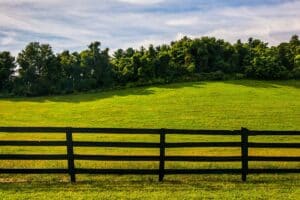Both sellers and buyers need to understand what is being sold.
When a seller lists property with a broker or advertises as a FSBO, he should establish both the nature of his ownership and its extent.
Real-estate law conceptualizes property as a bundle of rights. A seller may be selling all his rights in a property or just some, with or without limitation in either case.
One or more rights can be severed–sold, leased or given away. A common severance involves separating subsurface minerals from the surface. In some states, where surface is owned by one party and subsurface by another the situation is referred to as a “split estate.” I’ve evaluated properties where ownership of timber, water and wind have been separated from the bundle of surface rights being sold.
The sale, lease or donation of rights in property should be recorded. Most mineral sales and leases are, but I’ve found sales of timber rights not recorded and not disclosed.
A complete bundle of rights in property is referred to as “fee simple absolute.” The shorthand is, property “owned in fee.” Where subsurface rights have been severed from surface rights, that property is not being sold in fee.
A buyer may discover that different subsurface rights were sold to different entities. In the worst case, different parties could own the discrete rights to a property’s oil, shallow gas, deep gas, coal, coal-bed methane, hard-rock minerals, clay and water.
States differ in their views of the rights that surface owners retain when the owner of the subsurface rights wants to explore, drill or mine. Some states require some form of surface-owner consent. Other states more or less don’t.
In addition to determining which rights are included in the seller’s bundle, both the seller and buyer must understand what limitations apply, if any, to one or more of the rights to be conveyed from seller to buyer.
The right of exclusive possession, for example, would be limited by a neighbor having a legal right to cross your property to get to his. Life estates and hunting leases are other common limitations. A neighbor also limits the seller’s rights if he owns the right to tap the seller’s spring, pick some of his apples or dig gravel from his pit. Those limitations run with the land.
The purchase-offer contract needs to state whether the property is being purchased and conveyed in fee, subject only to limitations of record. If the seller cannot convey this way, all the exceptions need to be identified and understood by the buyer.
A buyer may need to state that all unrecorded easements, limitations, licenses (permission to use) and similar understandings of any kind end upon the sale of the property.
How much land is being sold?
Most purchase contracts start with an identification of the property the seller is selling and the buyer is buying. That should be simple enough. But it often isn’t.
A common way to describe the seller’s property is to write language in the contract that states the buyer is buying the same property that the seller bought from his immediate predecessor in title. The property is usually not described in detail, but is referred to as that which is described in the seller’s recorded deed, Deedbook __,
Page __ , found in the Clerk’s Office in the County where the property is located. An acreage number may or may not be included. Sometimes that’s good enough.
The first property I ever bought did not include an acreage figure in the deed. The agent told me it had 100 acres. It turned out to have 60. I didn’t know enough to know that a deed should contain an acreage figure. I was 25, which explained many other things at that time as well.
I believe that both parties need an accurate understanding of the dimensions and area of the property over which they’re bargaining.
While property ownership is properly conceptualized in three layers (subsurface, surface and above-surface), the primary concern is the two-dimensional surface area to be sold, expressed in square feet or acres.
An acre is 43,560 square feet. A square acre has almost 209 feet on each side. This area was thought to represent the amount of land one man could plow in one day with one ox.
Acreage is measured as if it were perfectly flat. The hillier the property, the more surface area it actually contains. A surveyed acre should always contain at least one acre, never less, but often more owing to topography.
The seller will say to a buyer directly or through a broker how many acres he is selling. He may express this in one of the following ways:
- 100 acres
- 100 acres, by recorded survey
- 100 acres, by deed
- 100 acres, by tax map
- 100 acres, by remainder
- 100 acres, more or less
The first of these — 100 acres — fails to specify how acreage size was determined. While it may be perfectly accurate, it is essentially not much more than the seller’s opinion. It is, however, specific, and it does not protect the seller by adding more or less, plus or minus, or approximately.
The second — 100 acres, by recorded survey — is almost always the most accurate acreage number that can be obtained, assuming the survey was performed by a licensed surveyor since WW II. The survey should be signed, dated, sealed with the surveyor’s license and recorded. All rural properties were surveyed at some point during the last 400 years, but those surveyed after WW II are likely to be more trustworthy than earlier ones as a general rule.
The third — 100 acres, by deed — reveals the source of the acreage number, but says nothing about the accuracy of that number. Deeds can contain different types of errors that misstate acreage. Deed acreage may or may not be the same amount that a surveyor would find either in the field or if the deed’s measurements were plotted out.
The fourth — 100 acres, by tax map — is an unreliable measurement, though it may be perfectly accurate in any particular case. Tax-map acreage comes from various sources—deeds, owners, surveys and something I call, “adjustments by negotiation and complaint.” Sometimes a seller will run a planimeter over a tax map or other map-like document to come up with an acreage number.
Tax-maps probably err on the side of undercounting acreage, because owners have a financial self-interest in understating the size of their holdings in order to pay less property tax. But I’ve seen tax-maps that overstate acreage. If a seller is selling acreage by tax map, I would suspect that he knows that it overstates actual acreage.
The fifth — 100 acres, by remainder — is an acreage figure that is arrived at by subtraction. An original large tract is divided over the years, and whatever acreage appears to be left numerically in the seller’s possession is the remainder acreage. A remainder tract may incorporate an acreage number in the seller’s deed. Both parties need to confirm a remainder number.
The sixth — 100 acres, more or less — is quite common. “More or less” was originally intended to account for relatively small errors in linear measurements or compass directions that were produced primarily by the relative crudeness of the surveyor’s instruments. My impression is that it has come to be used legally to cover a much wider range of acreage variation, to protect sellers against claims of fraud.
One hundred acres, more or less, could be 100 acres on the dot, or 10 or more acres, plus or minus.
The quickest and cheapest way I know for a seller or buyer to determine acreage is to pay a surveyor to run the seller’s boundary description (metes and bounds or government survey numbers, depending on the system) through the deed-mapper program in his computer.
This program will plot out boundaries on plain paper or a scaled topographical map. It also calculates acreage contained within those boundaries and determines whether “the calls close.” Calls should close, that is, the boundary line starting from a beginning point should end up at the same point after plotting all the calls. Calls that don’t close by a lot indicate a problem, which may be either minor (a transposition or transcription error in a number) or major.
The calls will come from a deed or a survey where the calls are drawn next to the boundary lines.
Once the deed-mapper program has plotted the boundary lines, it’s usually worth paying the surveyor to walk the lines on the ground to make sure of the following:
That the calls in the deed or survey match up with the boundary lines as found in the field;
That the property in the field is located where the property on paper (deed or survey) says its supposed to be located. Sometimes property boundaries can “drift” in one direction or another. The boundary lines are perfectly accurate, but the whole property is lined out in the field say one degree west of where it should be.
That the functional boundaries (fences, roads) in the field line up with the boundaries in the deed and deed-mapper drawing. The seller may have fenced in part of his neighbor’s property, or vice versa. These are called, encroachments. The party who has committed the encroachment may be able to prove that he has met the state’s tests to establish ownership of his neighbor’s property through adverse possession. Both the buyer and seller have reasons to be aware of an “off boundary line,” which indicates an encroachment, before concluding a sale.
In most cases, a surveyor can figure out boundary lines and do his match ups on a walk-through using a topographical map with drawn lines. But occasions will arise when a boundary line must be searched out in the records and shot in the field to establish it.
From a buyer’s perspective, a deed-mapper drawing, which shows acreage and closure, is usually sufficient evidence to make an offer or not make one.
Deed-mapping is inexpensive and fast.
Once a buyer has confirmed acreage to his satisfaction, his purchase-contract should specify that the property to be purchased contains X acres, as determined by
Y method. This can lead a buyer into an ethical dilemma when, for example, the seller’s deed says, and the seller believes, the property contains 100 acres, more or less, and the deed-mapper shows 150 acres. Most buyers don’t have much of a dilemma when the deed-mapper shows only 75 acres contained within the description; they simply tell the seller that he’s short 25 acres and they’re not paying for it.
Acreage discrepancies are not uncommon in rural property. It makes sense for the seller to know exactly what he’s selling and for the buyer to know exactly what he’s buying before a purchase contract lies on the table between them.
This content may not be used or reproduced in any manner whatsoever, in part or in whole, without written permission of LANDTHINK. Use of this content without permission is a violation of federal copyright law. The articles, posts, comments, opinions and information provided by LANDTHINK are for informational and research purposes only and DOES NOT substitute or coincide with the advice of an attorney, accountant, real estate broker or any other licensed real estate professional. LANDTHINK strongly advises visitors and readers to seek their own professional guidance and advice related to buying, investing in or selling real estate.









Add Comment